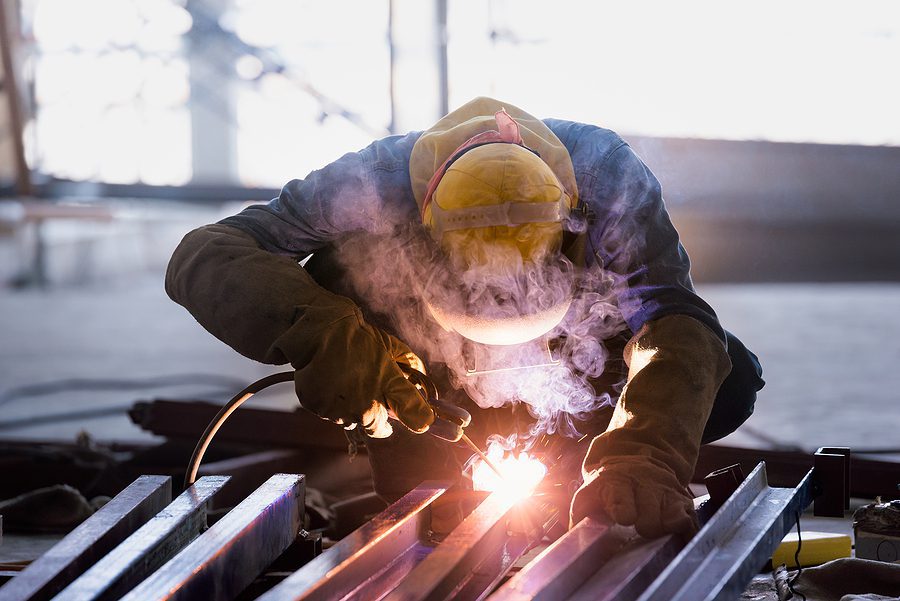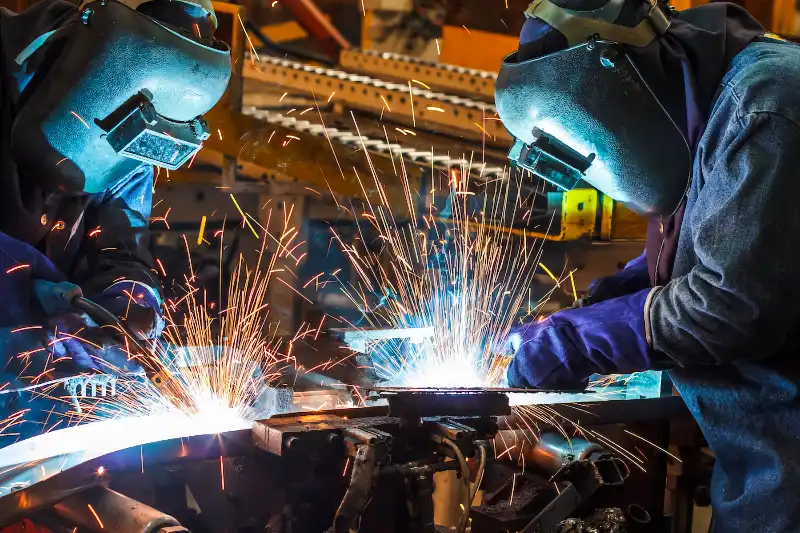Why misalignment happens and how Belgrade Fabrication handles it
Wiki Article
Typical Welding Repair Issues and How to Address Them Efficiently
Welding repair services often run into a range of issues that can endanger the honesty of the last item. Typical problems include inadequate infiltration, porosity, and misalignment, amongst others. Each issue offers special difficulties that call for specific techniques for resolution. Understanding these concerns is crucial for welders aiming to enhance their skills and results. This discussion will discover these typical welding repair work concerns and effective methods to resolve them.Inadequate Penetration
Inadequate infiltration occurs when the weld metal stops working to completely fuse with the base material, leading to weak joints and possible structural failures. This issue usually comes from inadequate warm input, wrong electrode angle, or incorrect welding rate. Welders might experience poor infiltration because of a miscalculation of the essential criteria for a specific material density or type. Additionally, contamination on the base product's surface area can impede reliable bonding, intensifying the problem. To address insufficient infiltration, welders need to ensure suitable settings on their devices and maintain a tidy job surface. Routine assessment of welds is recommended to determine any kind of shortages early, permitting for timely adjustments and the prevention of endangered structural stability in bonded assemblies.Porosity
Porosity is an usual defect in bonded joints that materializes as tiny gas bubbles caught within the weld metal. This issue can compromise the integrity of the weld, bring about minimized strength and possible failure under stress and anxiety. Montana Mobile Welding and Repair Belgrade. Porosity commonly occurs from contamination, dampness, or improper welding strategies, which allow gases to run away right into the liquified weld swimming pool. To resolve porosity, welders should guarantee correct surface prep work, preserve a tidy workplace, and use appropriate welding specifications. In addition, choosing the appropriate filler product and securing gas can mitigate gas entrapment. Routine assessment and testing of welds can aid determine porosity early, guaranteeing timely restorative activities are taken, therefore protecting the high quality and dependability of the welded structureMisalignment
Imbalance in welding can arise from different variables, consisting of improper configuration and thermal growth. Comprehending the source is essential for reliable resolution. A number of correction strategies are readily available to straighten elements and guarantee structural honesty.Causes of Imbalance
Welding imbalance typically comes from a variety of underlying concerns that can endanger structural honesty. One main cause is inappropriate fit-up of elements prior to welding, which can result in gaps and irregular surfaces. Variations in thermal expansion during the welding process can likewise lead to distortion, specifically if the products being joined have various coefficients of growth. Additionally, inadequate fixturing and securing might fail to hold parts safely in position, resulting in movement throughout welding. Badly kept devices, consisting of welding devices and devices, might introduce inconsistencies in the weld bead, further adding to imbalance. Ultimately, operator error, stemming from not enough training or experience, can additionally play a substantial duty in creating misaligned welds.Modification Techniques Readily Available
Addressing imbalance properly calls for a combination of restorative strategies tailored to the specific concerns at hand. One usual technique is using fixtures or jigs to hold components in the right setting during welding, making sure regular alignment. Additionally, pre-heating the products can help in reducing distortion and enhance fit-up. For significant misalignment, mechanical realignment techniques, such as using hydraulic jacks or clamps, can be employed to fix the setting before welding. Post-weld warm therapy might additionally be essential to soothe anxieties triggered by imbalance. Careful inspection and modification throughout the setup stage can prevent imbalance problems from ending up being considerable troubles, advertising a smoother welding process and improving total architectural stability.Distortion
Distortion is an usual challenge in welding that can emerge from numerous factors, including unequal heating and cooling. Comprehending the reasons for distortion is important for carrying out efficient avoidance strategies. Addressing this problem not only enhances structural honesty however also enhances the overall quality of the weld.Root causes of Distortion
When subjected to the intense warm of welding, products often undertake modifications that can result in distortion. This sensation mostly develops from thermal development and contraction during the welding process. As the weld location warms up, the material increases; upon cooling, it contracts, which can develop interior anxieties. On top of that, irregular home heating throughout a workpiece can intensify these tensions, leading to bending or flexing. The kind of product likewise plays a substantial duty; steels with varying thermal conductivity and coefficients of expansion might respond in a different way, bring about unpredictable distortions. In addition, inadequate joint layout and inadequate fixturing can add to misalignment throughout welding, increasing the probability of distortion. Understanding these reasons is crucial for efficient welding fixing and avoidance techniques.Avoidance Techniques
Reliable avoidance techniques for distortion throughout welding concentrate on managing heat input and ensuring correct joint design. Preserving a constant warm input assists to reduce thermal expansion and contraction, which can bring about distortion. Making use of strategies such as pre-heating the workpiece can likewise reduce the temperature slope, promoting consistent heating. In addition, choosing appropriate joint designs, such next page as T-joints or lap joints, can improve stability and decrease anxiety focus. Implementing appropriate fixturing to secure the workpieces in place additionally aids in maintaining placement during the welding procedure. Staggered welding series can distribute heat extra uniformly, preventing local distortion. By applying these approaches, welders can significantly reduce the likelihood of distortion and enhance the general top quality of their welds.Splitting
Fracturing is a common problem experienced in welding repair work, often arising from different factors such as incorrect air conditioning rates, product selection, or poor joint prep work. The incident of splits can greatly compromise the integrity of the weld, bring about potential failings throughout procedure. To resolve this concern, welders should initially assess the origin causes, ensuring that materials are suitable and appropriately selected for the certain application. Additionally, regulating the cooling rate during the welding procedure is vital; fast air conditioning can induce stress and anxiety and result in fracturing. Correct joint design and preparation additionally contribute to lessening the danger. Carrying out these strategies can enhance weld quality and longevity, eventually reducing the likelihood of breaking in ended up weldments.
Incomplete Blend
A substantial problem in welding repairs is incomplete blend, which occurs when the weld steel does not sufficiently bond with the base material or previous weld passes - Montana Mobile Welding and Repair Belgrade Fabrication. This issue can cause weaknesses in the joint, possibly compromising the stability of the welded structure. Elements adding to insufficient fusion consist of inadequate warmth input, incorrect welding strategy, and contamination of the surface areas being signed up with. To address this issue successfully, welders ought to assure proper pre-weld cleansing and surface area preparation, along with readjust their welding parameters to achieve sufficient infiltration and fusion. Normal inspection throughout the welding process can additionally assist identify incomplete combination early, permitting prompt rehabilitative actions to improve the overall quality of the weldOverheating
While welding repairs can boost structural stability, overheating provides a considerable obstacle that can result in product deterioration. Extreme heat throughout welding can modify the mechanical properties of metals, causing lowered strength, boosted brittleness, and warping. This phenomenon is particularly crucial in high-stress applications where structural dependability is extremely important. Recognizing overheating can involve aesthetic inspections for staining or distortion, as well as checking temperature throughout the welding process. To minimize the threats related to overheating, welders ought to utilize appropriate methods, such as regulating warm input, changing traveling rate, and utilizing suitable filler products. In addition, carrying view publisher site out pre- and post-weld warm treatments can aid recover material homes and improve the general quality of the fixing, ensuring long-lasting efficiency and security.Regularly Asked Concerns
What Are the Typical Indications of a Welding Issue?

Exactly How Can I Examine My Welds for High quality?
To test welds for quality, one can use visual inspections, ultrasonic testing, and radiographic methods. Each method guarantees architectural integrity, identifies problems, and verifies adherence to defined criteria, inevitably improving the dependability of the welded joints.What Safety Preventative Measures Should I Take While Welding?
When welding, one ought to focus on safety and security by using suitable personal protective tools, guaranteeing correct ventilation, safeguarding flammable products away, preserving a clean work area, and understanding environments to avoid accidents and injuries.Can I Repair a Weld Without Redoing the Entire Joint?
Repairing a weld without redoing the entire joint is feasible, relying on the damages (Montana Mobile Welding and Repair Welding). Strategies such as grinding, including filler product, or making use of a welding procedure can successfully attend to specific imperfections while maintaining the surrounding structureWhat Equipment Are Necessary for Effective Welding Services?
Necessary tools for effective welding repairs include a welding equipment, cord brush, grinder, safety gear, clamps, and filler materials. Each device plays an essential function in making sure top quality and safety throughout the repair service procedure. Porosity commonly occurs from contamination, dampness, or inappropriate welding methods, which permit gases to escape right into the molten weld swimming pool. Badly conserved devices, consisting of welding makers and devices, might introduce inconsistencies in the weld grain, more contributing to misalignment. When subjected to the extreme heat of welding, materials commonly go through changes that can lead to distortion. Fracturing is a typical concern encountered in welding repair work, commonly resulting from various aspects such as inappropriate cooling prices, product option, or insufficient joint preparation. A substantial concern in welding repairs is incomplete combination, which happens when the weld metal does not properly bond with the base material or previous weld passes.Report this wiki page